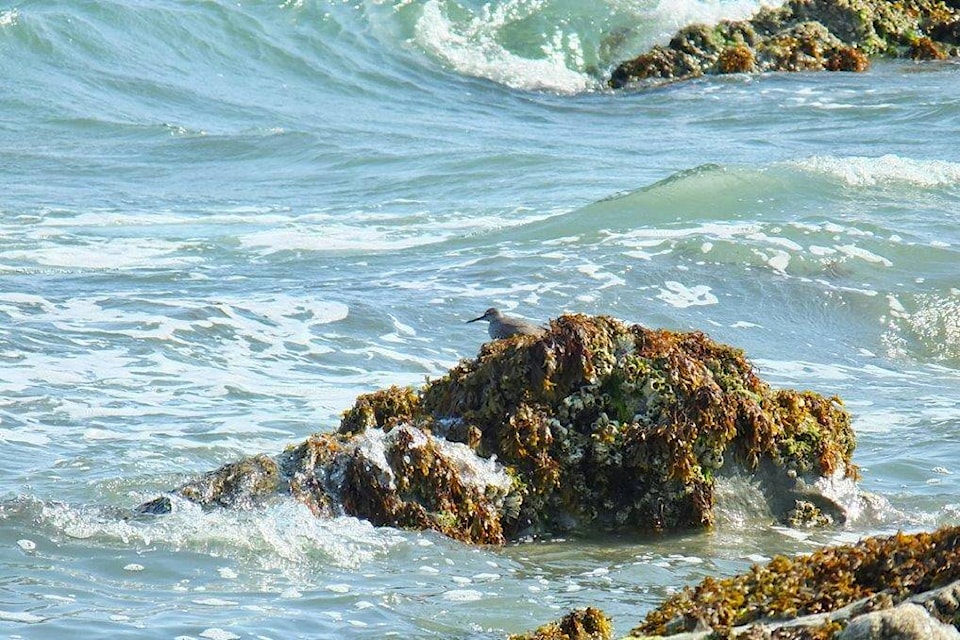By Margo Hearne
Mornings are a little chilly, evenings are getting darker. The cranes at the far north of Port Clements are still feeding with the cattle. They must have found something good to eat — it’s a whole new world. They have been feeding there for much of the summer: tall, gangly birds mixed in with the quadrupeds grazing beside them. It’s fun to watch as each goes about its business.
The crane family is still in Delkatla. They will be leaving soon, the chill is beginning to set in. They are now grey — they moulted out their rust-coloured feathers in August. Apparently, they get the rust colour from preening in the iron-rich waters here.
While some birds leave, others arrive. Following the recent southeaster, flocks of Green-winged Teal and Pintail fed in the soft mud along the margin. They may be the winter population returning to stay, but it seems a little early. They could be passing through and the resident birds haven’t arrived yet.
They often come in waves. First the birds that are moving further south stop in for a while, then the next lot arrives, then the locals drop in to stay for the short days ahead. Their arrival is reassuring. It’s good to know there are many birds still left in the wild world and the seasons are turning as they should. With all the fires and winds and huge storms crashing against the continent, one sometimes wonders if it is really too late to do anything to prevent the looming disasters associated with global warming.
Well, the birds are telling us, “It’s never too late because here we are again.” But we can’t sit still, idling our vehicles when parked, and we need to walk or bicycle a little more. Battery-operated cars are becoming mainstream and maybe one day they’ll be more affordable.
The juncos are back! First there was one, then two, now three. Small but positive steps. An interesting display of warblers came through midweek. Townsend’s flitted through the trees with chickadees and kinglets and an unusual Wilson’s Warbler — small, compact and bright yellow, it fed with them. They had come down from Alaska and were just passing through. One or two Townsend’s actually sang a short song and deep in the underbrush a Hermit Thrush called. We hadn’t heard one in so long that identification took a little while.
It’s interesting to note that it’s usually the little chickadees that are heard first, then the high, thin kinglet call. This seems to attract vagrant warblers and they all travel together while the weather is favourable. The next southeaster will bring birds in again — they tire when fighting a headwind.
Those lovely Golden Plovers have appeared on the beaches again. Seven landed at Skonun Point the other day and fed in the seaweed wracks left behind by earlier storms. This day the sea was like a millpond and it was so quiet that we could hear Horned Grebes calling out across the blue water and, on the rocks, two Black Turnstones preened and waited for the tide to fall.
As both the tide and the grebes moved further out a grey bird landed beside the turnstones. Only its head showed initially, then it moved until we could see the whole bird: a Wandering Tattler. It has an appropriate name as it often travels alone and calls a “rapid series of clear, hollow whistles.”
